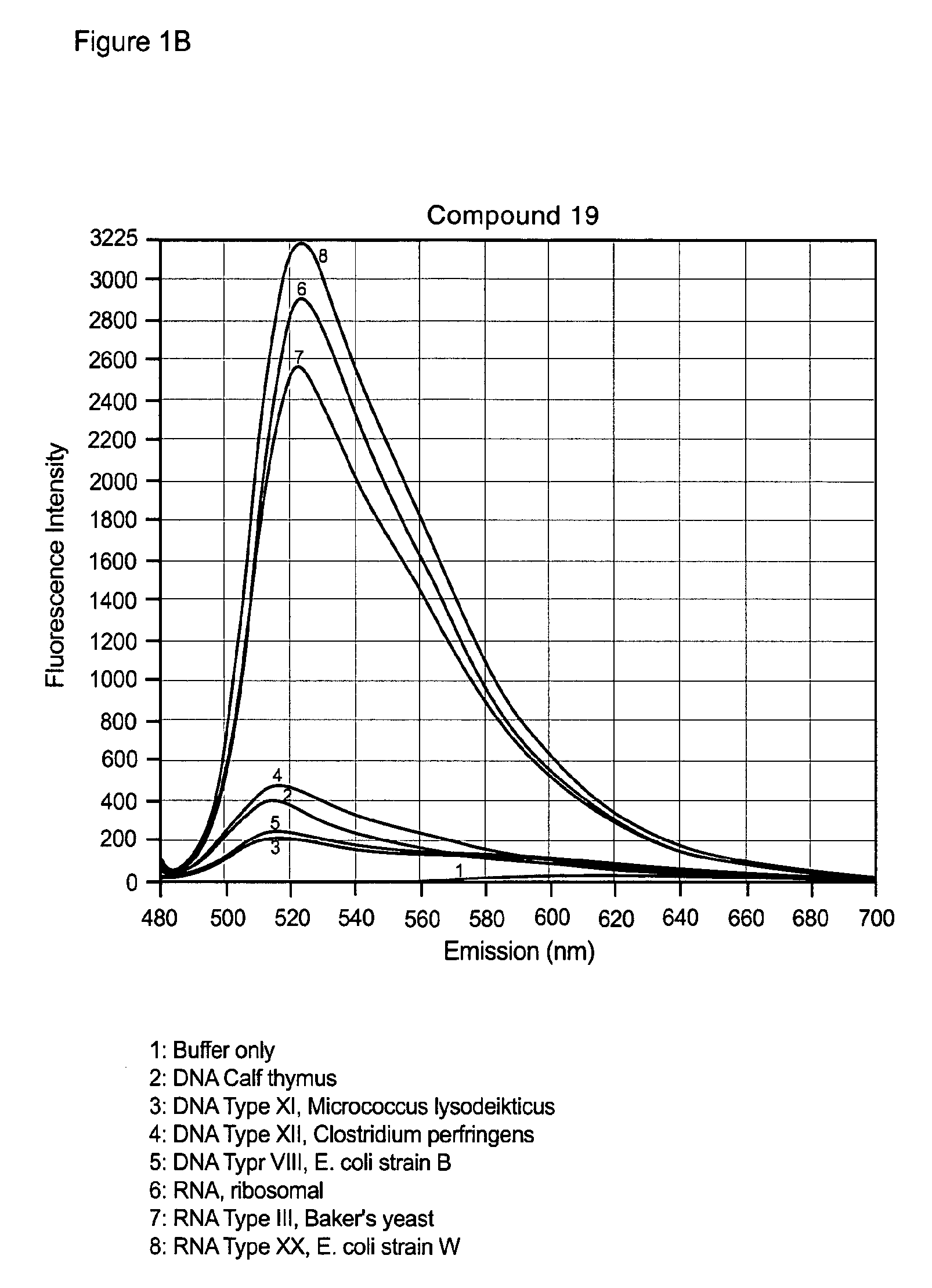Unsymmetrical cyanine dimer compounds and their application
a technology of cyanine dimer and compound, applied in the field of unsymmetrical cyanine dimer compound, can solve the problems of inconvenient synthetic method, no fluorescent dye capable of detecting rna, and many steps
- Summary
- Abstract
- Description
- Claims
- Application Information
AI Technical Summary
Benefits of technology
Problems solved by technology
Method used
Image
Examples
example 1
Preparation of Compound 1
[0203]To 52 mg of 2-chloro-4-(2,3-dihydro-3-methyl-(benzo-1,3-thiazol-2-yl)-methylidene-1-phenylquinolinium iodide in 5 mL of methylene chloride, 19 mg of 1,9-nonanedithiol is added followed by 20 μL of triethylamine. The mixture is stirred at room temperature overnight and 3.5 mL of ethyl acetate is then added to precipitate out Compound 1.
example 2
Preparation of Compound 2
[0204]A mixture of 150 mg of 2-chloro-4-(2,3-dihydro-3-methyl-(benzo-1,3-thiazol-2-yl)-methylidene-1-phenylquinolinium chloride, 32 mg of 4,7,10-trioxa-1,13-tridecanediamine, and 48 μL of triethylamine is heated in 10 mL of dichloroethane at 40-50 C for 4 hours. The solvent is evaporated and the residue is dissolved in 2 mL of DMF and added to 0.43 g of sodium iodide in 10 mL of water. Compound 2 is collected by filtration.
example 3
Preparation of Compound 3
[0205]A mixture of 26 mg 2-(3-succinimidyloxycarbonylethylthio)-4-(2,3-dihydro-3-methyl-(benzo-1,3-thiazol-2-yl)-methylidene-1-phenylquinolinium iodide, 2.7 mg of 3,3′-diamino-n-methyldipropylamine, and 7 μL of triethylamine is stirred in 1 mL of DMF at room temperature for 30 minutes. At the end of the period, 2 mL of ethyl acetate is added to precipitate Compound 3.
PUM
| Property | Measurement | Unit |
|---|---|---|
| concentration | aaaaa | aaaaa |
| concentration | aaaaa | aaaaa |
| concentration | aaaaa | aaaaa |
Abstract
Description
Claims
Application Information
 Login to View More
Login to View More - R&D
- Intellectual Property
- Life Sciences
- Materials
- Tech Scout
- Unparalleled Data Quality
- Higher Quality Content
- 60% Fewer Hallucinations
Browse by: Latest US Patents, China's latest patents, Technical Efficacy Thesaurus, Application Domain, Technology Topic, Popular Technical Reports.
© 2025 PatSnap. All rights reserved.Legal|Privacy policy|Modern Slavery Act Transparency Statement|Sitemap|About US| Contact US: help@patsnap.com



